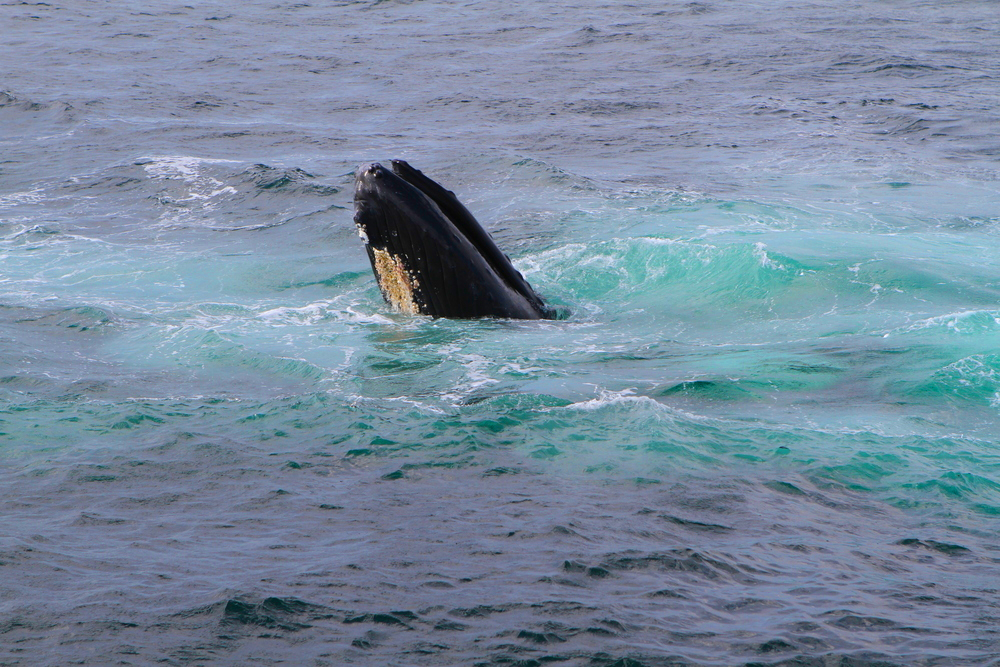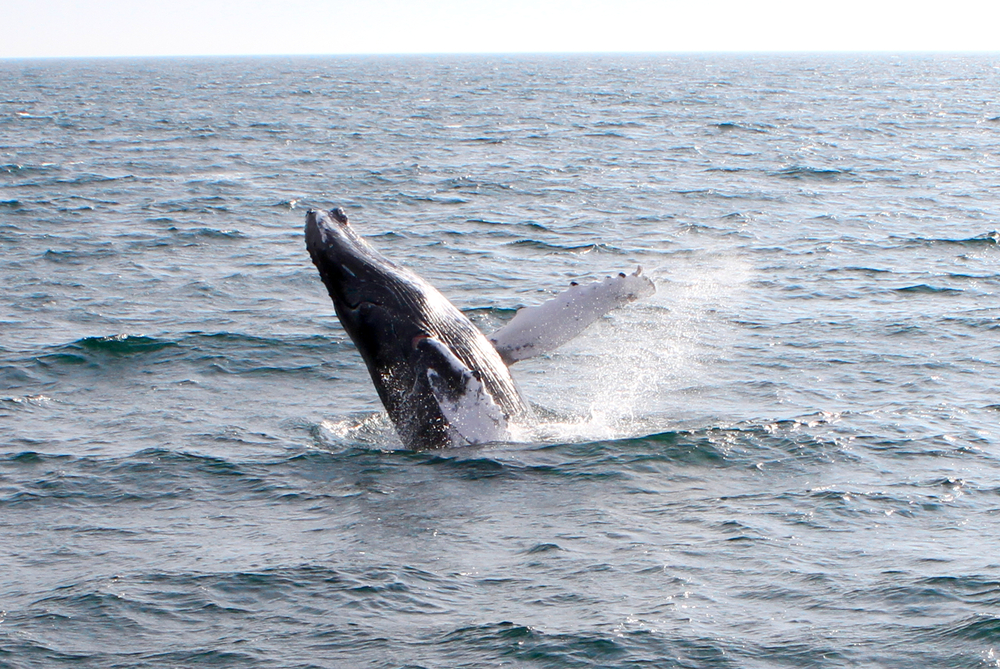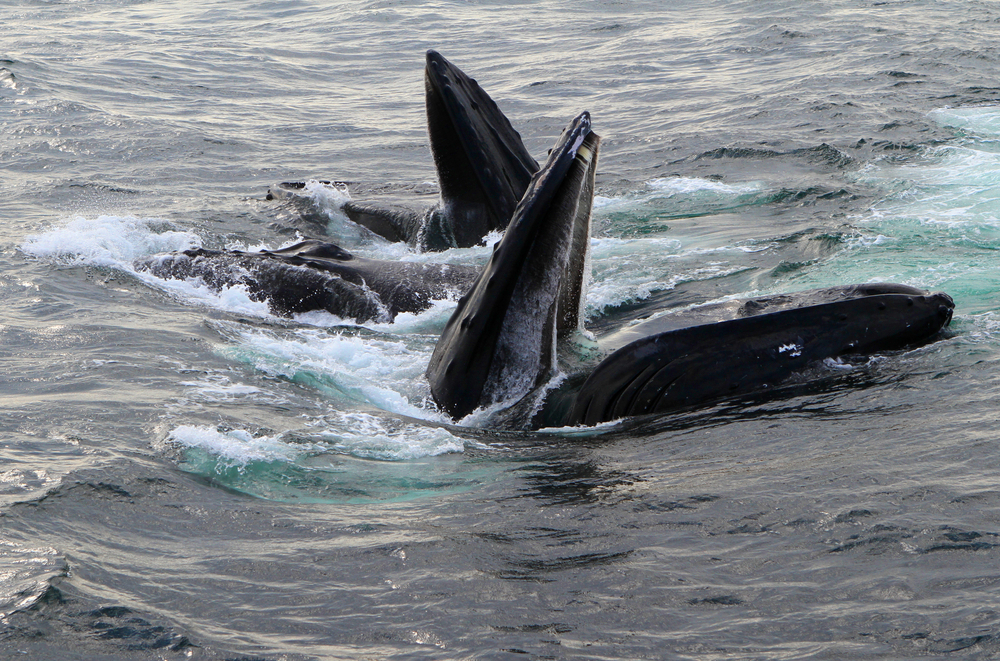I’ve been whale watching more than 50 times. Watching these gentle giants is one of the world’s best kept secrets, something many people young and old dream about adding to their bucket list. Keep reading for some of the most important things anyone interested in whale watching should know.

1. You really will see whales.
I can’t speak for every part of the world, in fact, I’ve been on some pretty disappointing whale watches elsewhere, but here on Cape Cod, the only times I’ve not seen whales has been when it’s pea-soup thick fog. Visibility makes the difference. If it’s clear, if it’s sunny, and if the boats are running at all, you can plan on seeing whales. And for many coming to Cape Cod in the summer, this is a big doubt: Will I see whales? Is it worth it?
I can’t speak to the “is it worth it?” side of things, as only you know your budget and how much you want to see the largest creatures on the planet. But for me, it’s always been worth it. (Except those 2 times it was foggy. And they do give you a voucher to use on a future trip in that case!)
The whales you see will range. We generally do not have blue whales or orcas. The most common are minke, finback, and humpback. Smaller whales like pilot whales and several species of dolphins are not uncommon to sight. You may even see an ocean sunfish or a great white shark if you’re lucky, along with a number of pelagic seabirds. For a few weeks each spring, endangered right whales come into Cape Cod bay. Seeing them from shore in April or May is a treat.
2. Sightings can vary.
While you’ll nearly always see whales, the definition of “see” varies quite a bit from trip to trip and season to season. Early whale watching trips, in May, June, even into July, may give you glimpses mostly of finback and minke whales, which glide like giant submarines through the water, come up for air, and then submerge again. They rarely do the spectacular antics that humpback whales are known for, such as breaching or feeding (shown above). If you want to see the humpbacks, it’s better to come in late July or August. In all the times I’ve gone whale watching, I’ve only seen breaching (when a whale leaps fully or partially out of the water) a handful of times, and only twice was it close enough to the boat for decent photos. But every time I’ve gone it’s been fun, a wonderful, inspiring, and interesting way to spend an afternoon.
3. If you’re at all prone to sea-sickness, take the free medicine early in the trip.
I’m lucky to have never once had even a faint bit of seasickness, but many people I’ve been on the boats with are not so lucky. Do yourself and everyone around you a favor by taking the medicine asap after boarding. It’s free, it works, and while it may make you drowsy, at least you won’t be missing the fun because you’re hanging over the stern losing your cookies.

4. Bring extra clothes and several layers.
Expect the open ocean temps to be substantially colder than what you’re feeling on shore. For a summery, warm day, at least plan on bringing a windbreaker. For a day with some choppy waves, you may want to have a change of clothes to put on because the spray will soak you.
5. Bring sunscreen and a hat with a strap.
No explanation needed on this one. IYKYK.
6. Avoid eating wrapped snacks or bringing disposable bottles of water.
These magnificent animals scoop up huge volumes of water in their mouths, then push the liquid out with their tongues, trapping all the tasty krill, fish, and (sigh) even a hapless seagull or two, swallowing whatever is left. If there’s plastic and trash floating in with the fish, guess what? The whales eat that too. Countless whales have died from trash lodged inside their intestines. Do your part by avoiding bringing anything that could blow overboard or get carried off the ship by the wind. And never, ever throw your trash on the deck or overboard.
7. Don’t expect to take great photos. Do expect to be thrilled and amazed.
Taking photos of whales is tricky, as they erupt suddenly out of the water and vanish quickly, often before you’ve spotted them or had time to press the shutter. For the best chance of catching these moments on (digital) film, use a wider angle than normal and be alert for any ripples or currents in the water. Have your hand ready. DSLR-users will want to have the camera on high-speed setting, and once you see the whale, go full send, take dozens of shots and choose the best ones after you’re home. Many people spend the whole time staring at their camera viewfinder, missing out on the majesty and awe-inspiring views they’d be able to see with the naked eye.
8. Sunset tours have their goods and bads
I love a good sunset, and the chance to see the sunset while whales cavort in front of you seems like the best of both worlds, but the downside is that the light generally isn’t great for good photos. Often, the sun hanging low in the sky means the visibility gets worse, especially if the whales are between the boat and the western horizon. You’ll see silhouettes, but you won’t see the whales. I find that the best viewing is during the peak of the day, when the light, directly overhead, doesn’t glare as much and the colors are the most true.
That said, the return boat ride, watching the sun set and the sky turn into a golden Monet, is hard to fault. It’s also a nice way to segue into a tasty dinner somewhere in Provincetown.

Leave a Reply